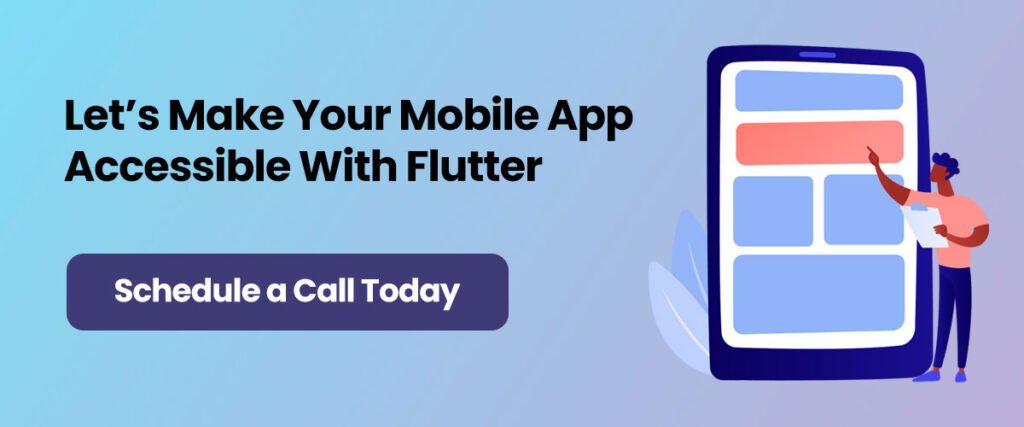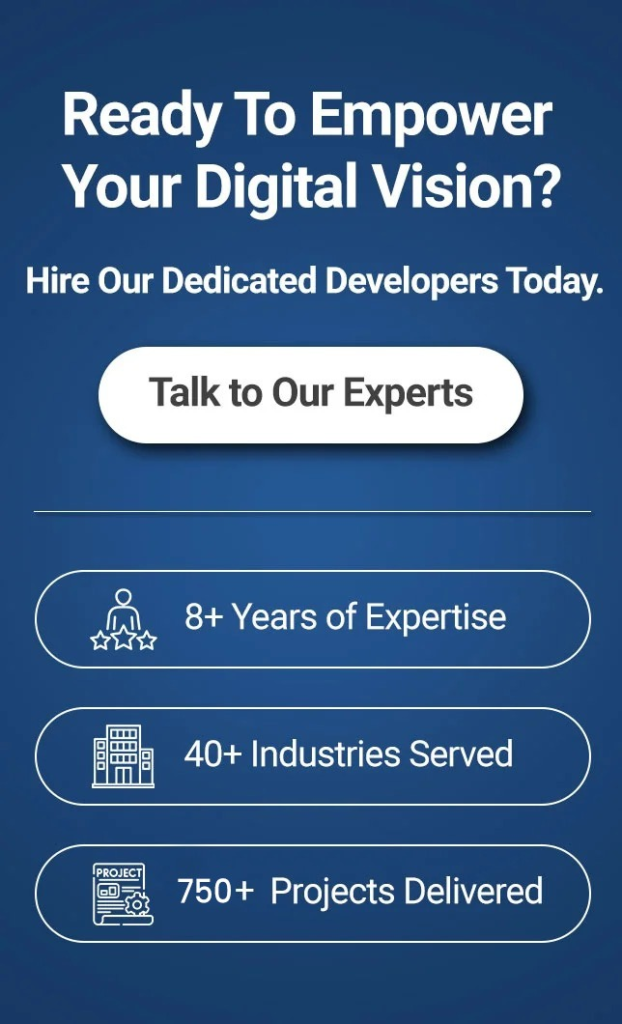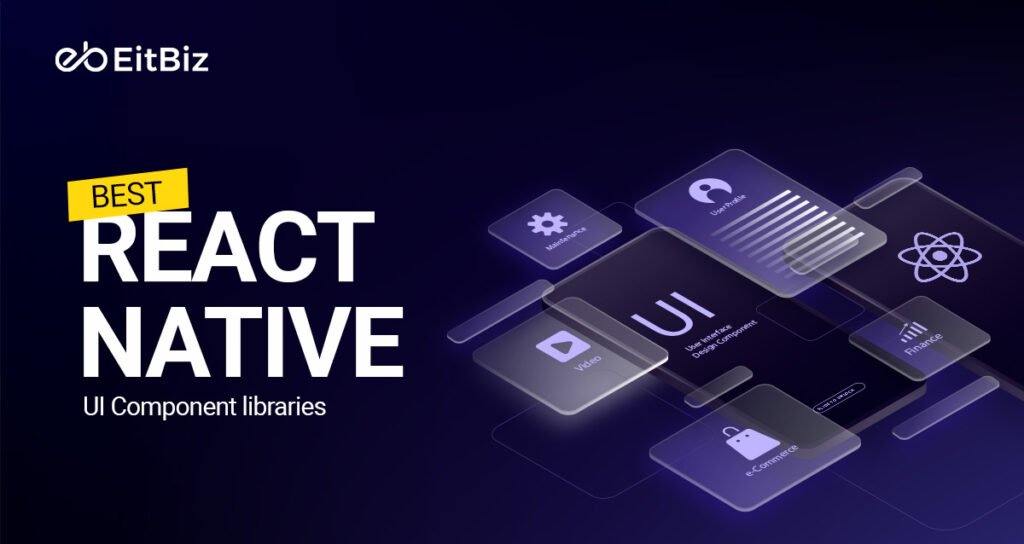Since the world has turned on its heads to be around technology, making mobile accessible applications is no longer a nicety – it should be a necessity.
Mobile app developers should, therefore make accessibility a priority or, in other words, an effort to bring about the removal of barriers that prevent everyone, including people with disabilities, from accessing the application.
Google’s Flutter is an open-source toolkit to create native mobile, web, and desktop applications. It provides excellent tools to make building accessible apps easier for all users.
In this blog post, we are going to focus further on Flutter’s accessibility features and, of course, discuss some best practices in designing apps accessible to everybody.
Accessibility: Why Does it Matter?
Accessibility is important for several reasons, but one main reason is that it is just simply the right thing to do. In many countries, laws state that digital products, such as apps, must be accessible to people with disabilities. In America, for example, this is required under the Americans with Disabilities Act. Within the European Union, there is an Accessibility Act that compels private companies and governments, respectively, to ensure that digital products and applications, for example, can reach everyone.
Accessing your application is also beneficial for your business. This simply means that more people would be able to use your application, thus increasing the size of your user base. Once your app is accessible, it creates a better experience for all your users, which could, on its own, give way for more positive feedback as well as increase your brand’s reputation.
The Importance of Accessibility in Mobile Apps
The accessibility of our mobile applications isn’t just a checkbox exercise; it empowers people with disabilities to use and benefit in significant ways from technology. Mobile accessibility is crucial because it shifts the way hundreds of millions of different types of users interact with apps, thereby improving the quality of their digital experiences.
We make apps accessible so users with various needs, including people with visual, cognitive, or motor impairments can comfortably use our products. Features such as screen readers, which we provide in the form of iOS’s VoiceOver and Android’s TalkBack, ensure people intuitively interact with content within apps.
Accessibility also widens your target users; more people can enjoy your app as well as improve the overall quality of development. With the accessibility features built into Flutter, you will give an application that is accessible to the visually impaired or cognitively challenged as user-friendly, therefore a better user experience and a more productive product.

Accessibility Release Checklist
As you prepare your app for release, it’s important to ensure it’s accessible to all users. Here’s a checklist to guide you:
- Active Interactions: Each button or interactive element should respond appropriately. If there isn’t a specific function for a button-like no-op callback, at minimum it should provide some kind of feedback: display a SnackBar that lets the user know what they pressed.
- Screen Reader Testing: For TalkBack in Android and VoiceOver in iOS, check that the screen readers describe controls on the screen clearly when tapped. The description must be understandable.
- Contrast Ratios: The contrast between the text or interactive elements and its background is at least 4.5:1. Thus, those kinds of elements are readable. Contrasting exception: disabled elements, and images
- Context Switching: The system should not automatically switch the user environment in order to enter information, for example by changing screens or focus. Context should change only at the explicit request of the user.
- Tappable Targets: Any interactive elements like buttons should have an area of at least 48×48 pixels in size so that users with poor motor abilities can easily tap them.
- Errors: Important actions must be undoable so that users can correct some errors. If a field is invalid, the system should offer hints or corrections to the user to address the problem.
- Color Vision Deficiency Testing: Test your app to ensure usability by color-blind users or grayscale. Ensure that controls are readable without color references.
- Scale Factors: The UI should still be navigable and readable when the user has increased text size or high display scales. Make sure that your design does not break at large text or high zoom levels but degrades gracefully.
What are the Best Practices for Inclusive App Design?
Designing an accessible app goes beyond simply adding accessibility features. A thoughtful plan and regular testing are required. Here are a few best practices for creating an accessible app for everyone:
1. Provide Clear and Descriptive Text
Make sure all text elements, like buttons and labels, are descriptive. Users who rely on screen readers count on this text to understand what each part of your app does and how to use it.
2. Use Semantic Widgets
Take advantage of Flutter’s semantic widgets such as Semantics, ExcludeSemantics, and MergeSemantics to enhance the meaningful information for the app interface. These widgets will help assistive technologies understand which context needs to be communicated to the users so as not to offer confusing and annoying experiences for people who are using screen readers or similar tools.
3. Test with Accessibility Tools
The app should be continuously tested with accessibility tools and screen readers. More often than not, the tools in Android and iOS can help in testing the apps to check for accessibility problems or bugs. It is also advisable that users with disabilities be called in to test the application so they can provide real-life feedback.
4. Provide Alternative Content
For non-text elements, such as images or videos, make sure to provide alternative descriptions (alt text) or transcripts, so a user with a visual or hearing disability can interact with the content since even though they wouldn’t be able to see and hear it, this would still provide a meaningful way to interact with it.
5. Ensure Keyboard Navigation
All interactive elements in your app should be keyboard and navigation accessible. That is important for people with mobility impairments but is also a popular feature among power users who have keyboard shortcuts as an option to use.
6. Follow Platform Guidelines
Follow the Android and iOS guidelines on accessibility so that it creates a uniform experience across platforms. In case a widget or a design pattern from the platform meets better requirements of the application, do not hesitate to use it to meet the expectation of the user.
7. Regularly Update and Maintain
Accessibility is not something that you set up once and forget about it. In a place where your app continues to evolve and innovate with new features or layouts, so do your accessibility elements. Maintenance will ensure that the app will be usable for anyone, including people with disability.
Final Thoughts
So, there you have it! That’s a wrap to the mobile app accessibility with Flutter! Here, we have proved the importance of accessibility in Flutter and how that is a crucial part of creating accessible applications for everyone in the world.
This lets you apply widgets and best practices, so an application is accessible to all users concerning their ability. Regular testing with accessibility tools as well as brainstorming in detail about the various needs of your audience will help you make an effortless experience that will work well on any device.
With such efforts, you can develop apps that resonate with a broad and diversified user base.Planning to build mobile apps with Flutter? If so, look no further than EitBiz! Partner with EitBiz and build a responsive and performance-centric mobile app via Flutter. Drop us an email at info@eitbiz.com or call us at +1(812)530-6300 today!







